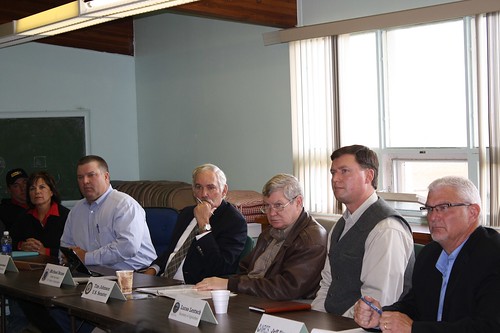
Farmers and ranchers know many variables are sometimes not in their hands, especially when it comes to weather. That’s why USDA Secretary Tom Vilsack and U.S. Senator Tim Johnson asked me to travel to South Dakota this week to see firsthand the widespread destruction to livestock in the wake of the Atlas Blizzard, and to consult with affected producers on how USDA can help right now - - despite two years of Congressional inaction on the Food, Farm and Jobs Bill.
When I joined one farmer in his living room, learning how his livestock losses, including pregnant stock, meant years of income gone, I thought of Congress, how it lurches from one crisis to the next, and how that legislative atrophy creates real consequences beyond just American farmers but for entire rural communities.
This storm killed tens of thousands of livestock. It’s a real financial emergency, yet USDA’s most helpful program in South Dakota and the neighboring states of Nebraska and North Dakota also hit by the snowstorm, the Livestock Indemnity Program, is unavailable until Congress acts. We’re reminding everyone in the interim to keep careful records and to submit documented losses to their local Farm Service Agency office.
We’re also offering a special signup of the Environmental Quality Incentives Program through November 15th, 2013, to help producers dispose of livestock carcasses, replace destroyed fencing, and rebuild shelterbelts and other conservation practices damaged by the storm. Special thanks to the State of South Dakota for its cost-sharing partnership with USDA on this effort.
And the USDA's StrikeForce Initiative is working closely to connect Native American Tribes in the state with a variety of USDA resources, including conservation programs.
When our friends are sick or hospitalized, we take turns on their farm because they would do it for us, and today in South Dakota, people are coming together, creating relief funds and holding potluck fundraisers for those affected by the blizzard- - a spirit of cooperation that underlies rural America. And with nearly one-fifth of the total veteran population living in rural America in 2011, don’t we need more of that spirit in Washington?
South Dakotans can count on USDA to use every single tool in our toolbox, but there are only so many tools. We may have little control over the weather, but folks do have control over Farm Bills, and that control comes with responsibility to ensure that a full five-year Farm Bill is enacted at once.
If you agree, I invite you to share your story on Twitter, Facebook, Instagram, YouTube or other social media tools by using #MyFarmBill to let everyone know how these programs are important to you.



